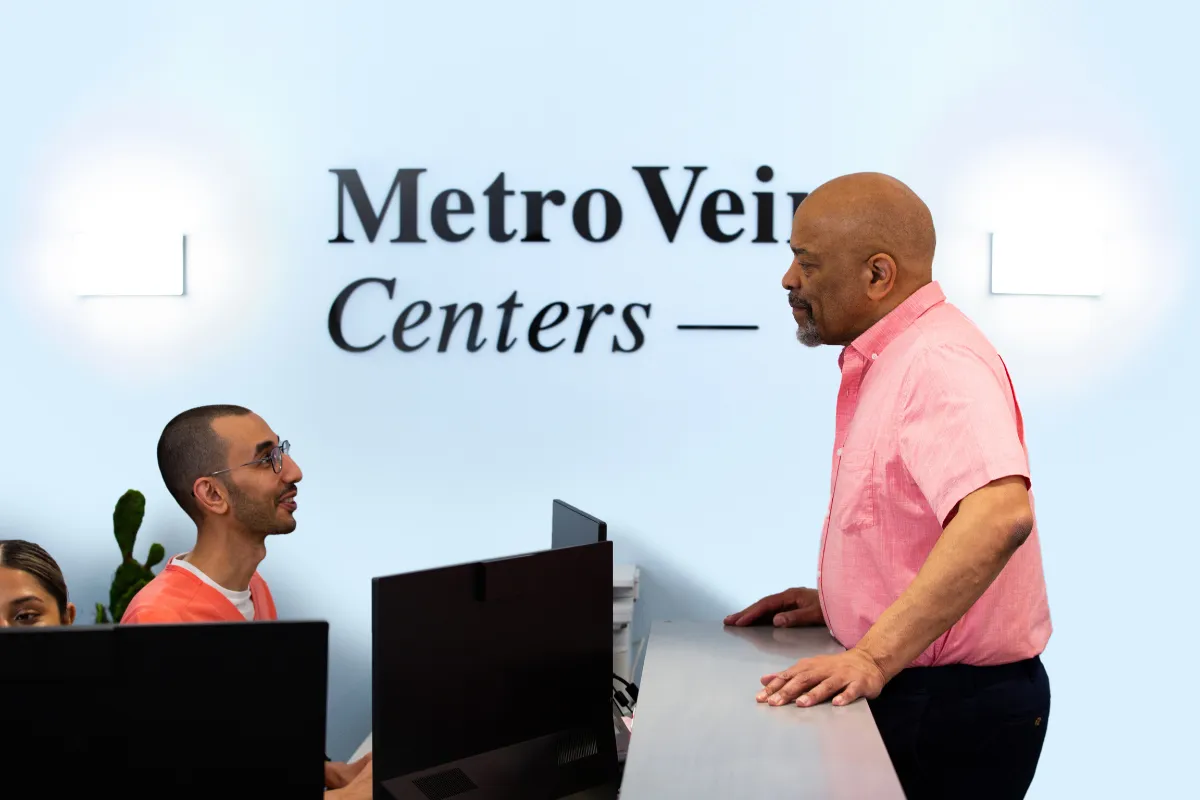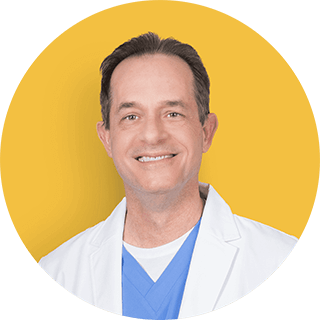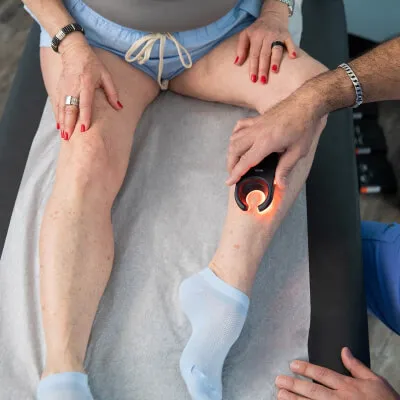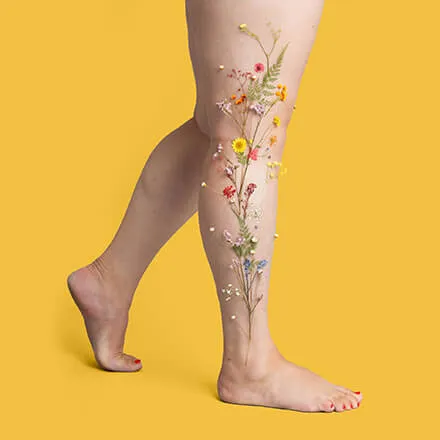Swelling, also known as edema, is a common symptom of chronic venous insufficiency caused by poor circulation. As we enter the summer months, you may notice that hot weather severely aggravates already swollen calves, ankles and feet, causing you to wonder... why is swelling affected by heat? How are veins connected to swelling in the legs? Here, we will dive into five reasons why swelling in your legs might be worsened by hot weather.

Understanding Edema
Edema is caused by fluid retention within the body. When fluid becomes trapped in bodily tissues, it can visibly expand the affected area, causing the skin to appear and feel tight (similarly to pressing on a water balloon). Edema occurs most often in the legs and feet, as chronic venous insufficiency is one of the main culprits behind the symptom. The veins in your legs and feet have a tough job within the circulatory system: returning blood back to your heart against the weight of gravity. Because of this, veins in your legs are usually the first to become weakened. When the valves in veins malfunction, blood pools and flows backwards, increasing venous pressure which can lead to swelling.
Swelling in the legs is an uncomfortable condition that alerts people to the possible presence of chronic venous insufficiency, commonly known as vein disease and abbreviated as CVI. For those who already experience swelling due to poor circulation, a top concern we see in our clinics is swelling that becomes noticeably worse as temperatures rise. When we factor heat into the equation, edema can become extremely uncomfortable... but why does heat affect your veins at all?

Why Heat Edema?
Heat edema, also known as "heat-related edema" or "heat-induced swelling," refers to accumulation of excess fluid in the body's tissues that occurs as a response to high temperatures. Heat edema is a common phenomenon during hot weather conditions and can affect various parts of the body -- reported most often in legs, ankles, fingers, and feet.
When the body is exposed to heat, several physiological mechanisms come into play which can contribute to swelling in the body.
Heat-induced vasodilation: When weather is hot, your blood vessels may dilate or expand, increasing blood flow to the surface of the skin and helping to cool down the body. This expansion of your vessels can lead to increased permeability of blood vessel walls, allowing fluid to leak into surrounding tissues and causing noticeable swelling.
Fluid retention: High temperatures can cause your body to hold sodium as a survival tactic, which can lead to water retention. There's no way to tell your body that you're not actually lost in a desert -- so it will behave as if that's the case, just as a precaution. Excess fluid caused by sodium can accumulate in your legs and other body parts, resulting in swelling.
Lack of movement: Have you ever had a day where it was simply too hot to do anything but think? During hot weather, people may be more inclined to stay sedentary or avoid physical activity in order to stay cool. Heat can also cause fatigue, which inspires rest rather than physical activity. Prolonged periods of sitting or standing without regular movement is one of the contributing risk factors to poor circulation because the calf muscles are not regularly contracting around your veins, helping to pump the blood upwards against gravity and towards the heart (such as when you walk). In the presence of weak veins, this lack of contraction can lead to fluid accumulation in the legs and cause swelling.
Dehydration: In hot temperatures, your body will produce sweat to cool down its temperature. If you're not adequately rehydrating as you sweat, dehydration can occur and your body may attempt to hold on to fluid in bodily tissues as a response, which can contribute to swelling.
Chronic venous insufficiency: Heat can exacerbate existing vein problems, such as chronic venous insufficiency in the legs. These veins are already compromised in terms of proper blood flow, and heat can further cause an increase in leaking of fluid through the vein walls and into bodily tissue, which creates more swelling (you can see where this is going!).

What to Do About Edema?
Remember, while mild swelling might be a normal reaction to heat, severe or persistent swelling could indicate an underlying health issue like chronic venous insufficiency. It's always a good idea to consult a healthcare professional if you're concerned about your symptoms, or if you notice symptoms that do not go away with time or improved lifestyle choices (such as better hydration and regular activity or exercise).
While heat edema is usually a temporary and benign condition, it can be quite uncomfortable (especially as hot weather is already quite stifling on its own). It's important to differentiate between mild swelling caused by heat and more serious medical conditions that can also cause swelling, such as deep vein thrombosis (DVT) or vein diseases.
To manage heat edema, our vein specialists recommend staying hydrated, avoiding prolonged periods of sitting or standing (if it's too hot to move, elevate legs while at rest), and keeping legs propped up when possible can help reduce swelling. If swelling is severe, painful or persistent, and accompanied by other concerning symptoms like aching, itching legs, or restless legs, or if the swelling is asymmetrical (appearing in one leg and not the other), seek medical attention for further evaluation.

How to Distinguish Heat Edema from CVI Swelling
Dr. Mason Mandy, M.D., DABVLM, one of the board-certified vein specialists at Metro Vein Centers, has some advice on differentiating between heat edema and edema caused by vein disease.
"Edema and swelling are the same thing: 'Edema' is the medical term and 'swelling' is more conversational. Heat edema is basically mild, temporary swelling, and is more general in nature. This can happen to anyone. It results in some mild puffiness, and could affect hands and feet," Dr. Mandy explains. "Edema due to venous insufficiency is swelling in the lower legs and ankles regardless of temperature, and is highly gravity-dependent. Leg elevation relieves edema if it is caused by poor circulation and vein disease. That said, heat can make venous insufficiency swelling worse than it would be otherwise. We see a lot more edema at this time of year than we do in colder months."
If you are experiencing swelling in your legs on a regular basis, and you notice it worsens in warmer temperatures, try elevating your legs while you watch television or while you sleep. If the swelling decreases due to these adjustments, it may be time to call a vein doctor near you to schedule an evaluation.

How to Alleviate Heat Edema
Proactive measures can help you manage fluid retention, improve circulation, and reduce heat edema:
Stay hydrated: Proper hydration is essential to maintaining a healthy fluid balance in the body. Drink plenty of water throughout the day to avoid fluid retention.Good hydration practices can also help with maintaining good blood volume, which is helpful against overheating.
Avoid excessive heat: If heat aggravates swelling and discomfort, minimize exposure to extreme heat whenever possible. Stay indoors during the hottest parts of the day and seek air-conditioned environments. Cold-water compresses may also provide some relief for you (and your legs).

Elevate your legs: As Dr. Mandy says, elevating your legs can be key to reducing swelling, especially when it's caused by vein disease and exacerbated by hot weather. Propping your legs up encourages better blood circulation by helping your veins work with gravity rather than against it (as when standing) to prevent fluid buildup in the legs. Ideally, your legs should be elevated above the level of your heart for maximum efficiency.
Move regularly: Avoid prolonged periods of sitting or standing in one position. If you have to sit for extended periods, take breaks to walk around and stretch your legs. Regular movement helps maintain healthy blood flow. Calf muscles, especially, play a critical role in encouraging blood flow; simple calf raises every now and then can have a positive impact.
Cool compresses: Applying cool compresses to swollen areas can help constrict blood vessels and reduce swelling caused by inflammation. Use a damp, cool cloth or a cold pack, but avoid applying ice directly to the skin as that may cause irritation and discomfort.
Compression garments: Graduated compression stockings or socks can help improve circulation by providing gentle pressure that encourages blood flow from the legs back toward the heart. We recommend looking for garments rated around 20-30 mmHgs, in an over-the-knee or thigh-high stocking style for best results.

Massage: Gentle massage can promote lymphatic drainage and improve circulation. Use light pressure and apply an oil or lotion to the skin to prevent irritation. Gentle is best! Avoid pressing too hard on swollen areas, and move in an upward, single-direction motion (toward the knee).
Monitor salt intake: Monitor your sodium intake, as excessive salt consumption can lead to fluid retention. Read food labels and choose low-sodium options whenever possible if you are experiencing swelling.
Cool baths or showers: Taking a cool bath or shower can help lower your body temperature and possibly reduce swelling. Cool water can also have a soothing effect on your legs if they are painful or uncomfortable from swelling.
Nutrition: Incorporate foods rich in potassium (like bananas, spinach, and avocados) into your diet, as potassium can help balance fluids in the body. As we mentioned above, avoid foods that are high in sodium when possible and drink plenty of water.

Medical consultation: If you are experiencing swelling that is severe, persistent, or accompanied by pain, redness, or other concerning symptoms, it's important to consult a healthcare professional. Finding meaningful, lasting relief may require steps outside the scope of DIY and home remedies. A board-certified vein specialist can rule out any underlying medical conditions that may be causing your swelling, such as vein disease, and provide appropriate treatment to remedy your symptoms.
Remember that heat edema often is a temporary condition that improves with proper self-care and management. However, if you're unsure about your symptoms, or if they worsen, it's wise to seek medical advice. If your pre-existing swelling is becoming frustrating, or if it is amplified when temperatures soar, we recommend coming in for a vein evaluation in any of our New York, New Jersey, Connecticut, Michigan, Texas, Arizona, or Pennsylvania vein clinics. Vein disease and associated symptoms such as swelling can be improved with minimally invasive, FDA-approved vein treatment options. Our vein specialists are here to help! Give us a call at 866-353-6303 to schedule your vein evaluation and look forward to enjoying summers!
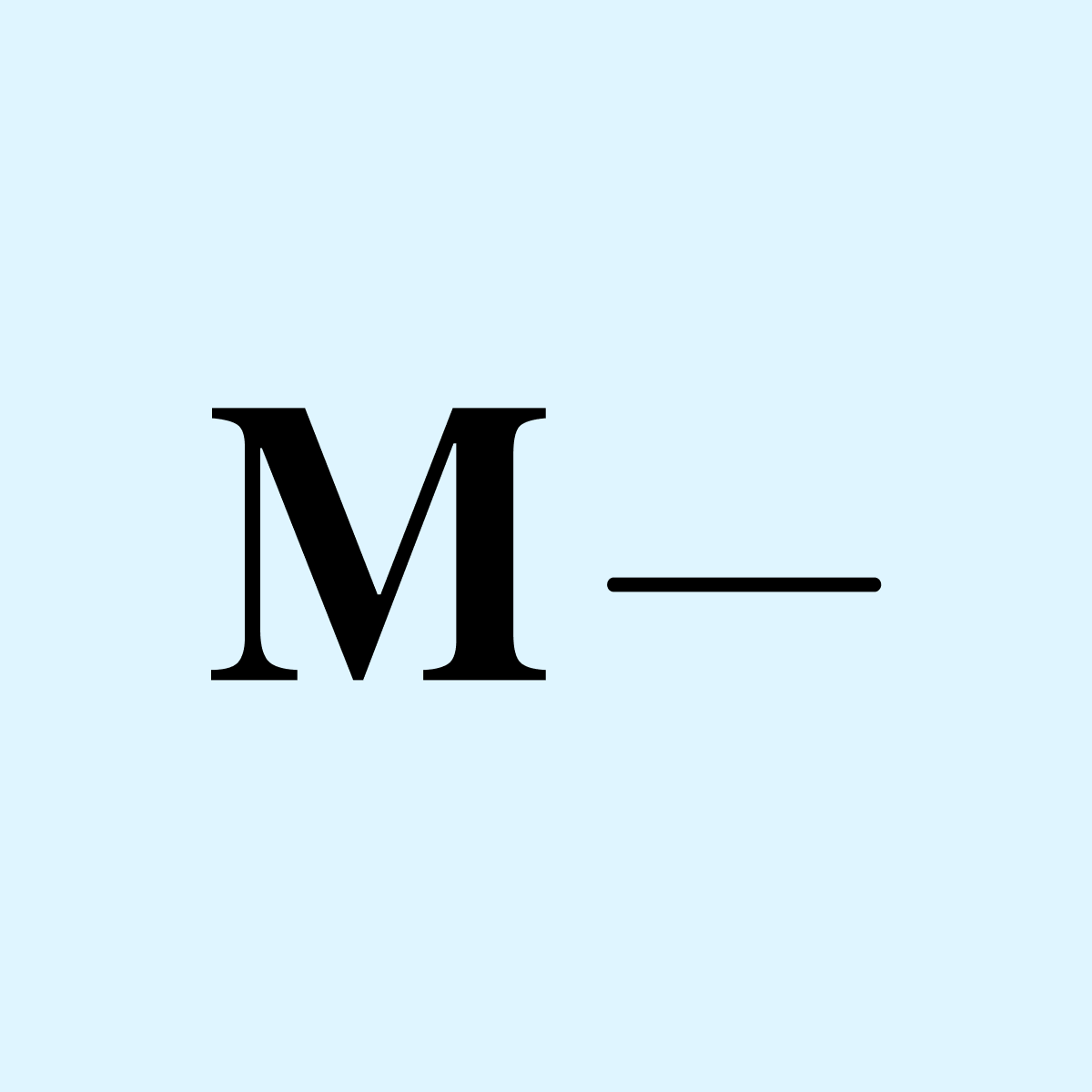
Metro Vein Centers Editorial Team
From vein care 101 to treatments, the Metro Vein Centers blog offers patients everything they need to know about vein health.

Trusted insight from the nationally accredited, board-certified vein doctors at Metro Vein Centers.




